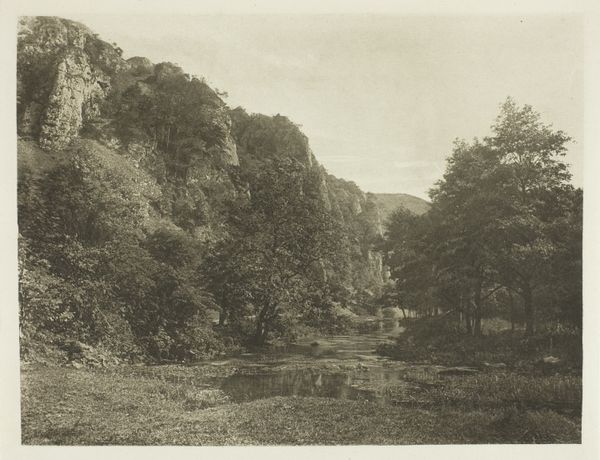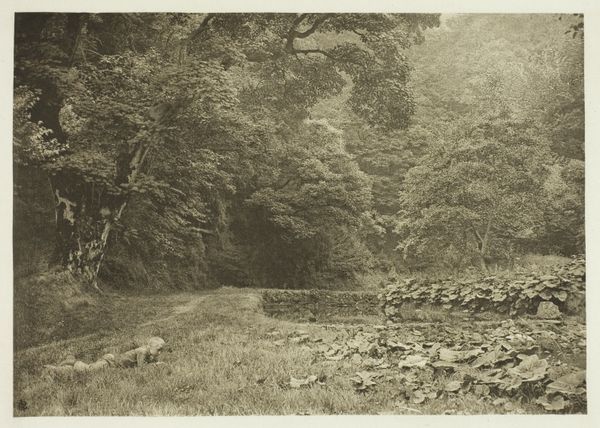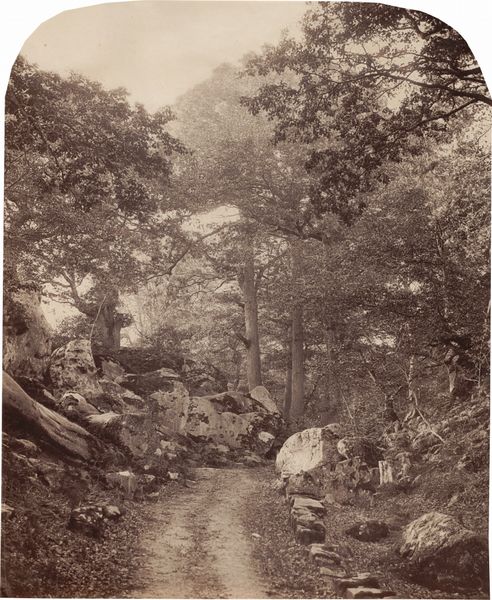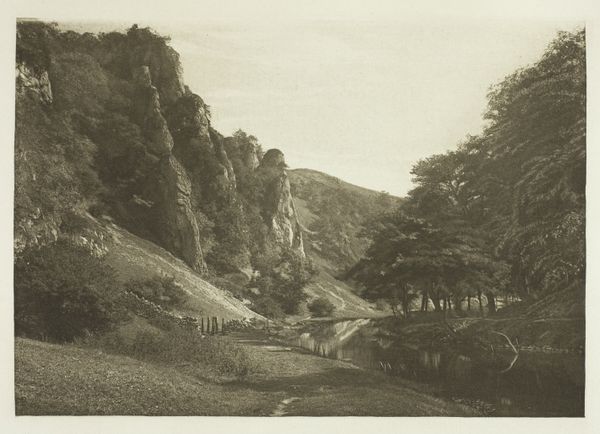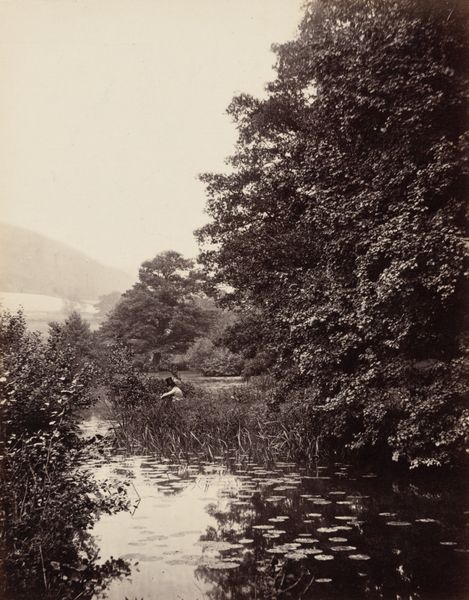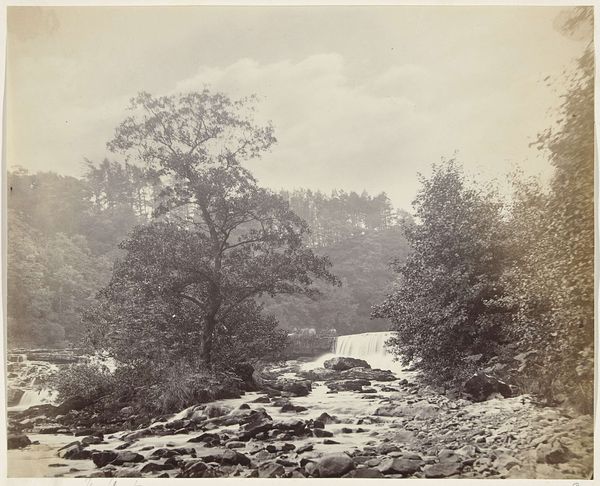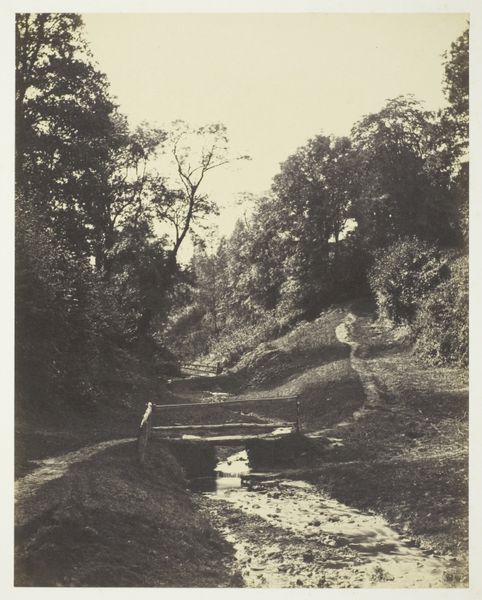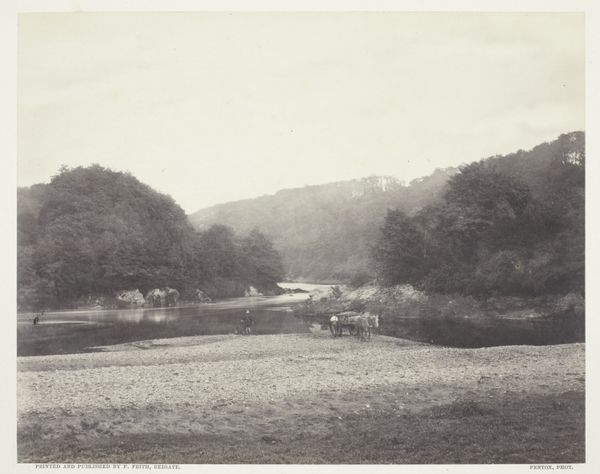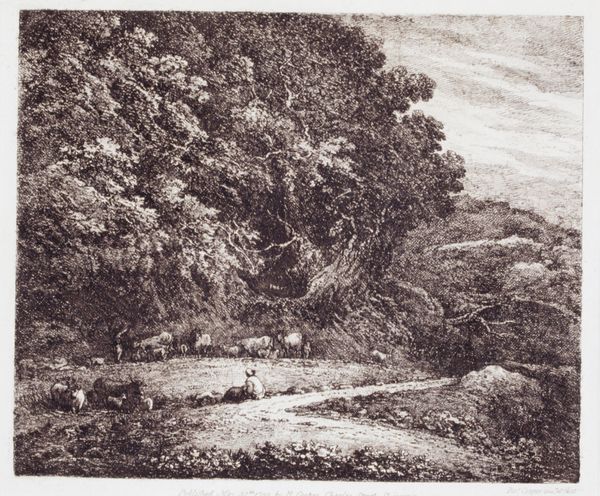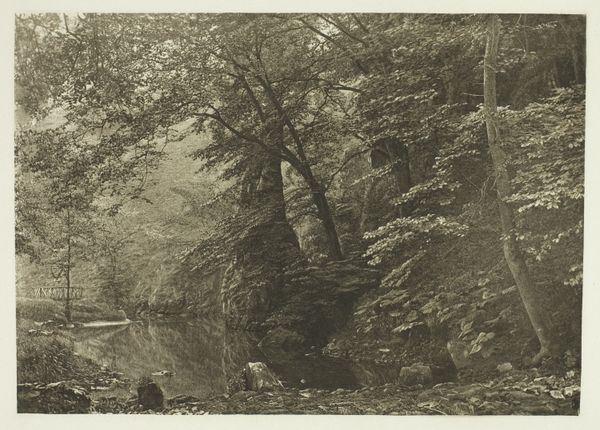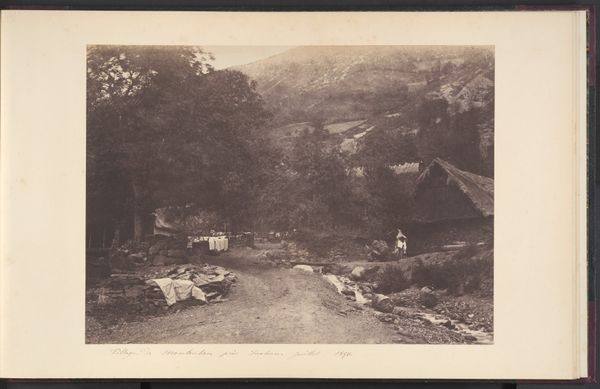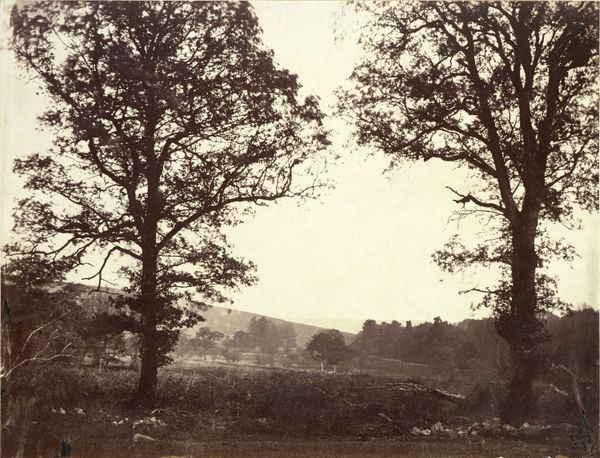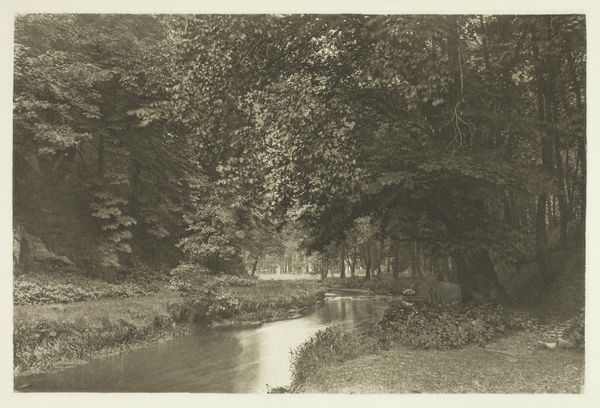
photography
#
16_19th-century
#
natural tone
#
countryside
#
organic shape
#
agricultural
#
nature
#
photography
#
outdoor scenery
#
england
#
nature friendly
#
nature heavy
#
nature environment
#
shadow overcast
Dimensions: 15.1 × 20 cm (image); 17.2 × 21.8 cm (paper); 24.8 × 32.1 cm (album page)
Copyright: Public Domain
Editor: We're looking at "In Dove Dale," a photograph by Peter Henry Emerson, from the 1880s. There's something very pastoral and picturesque about the scene. It's a classic view of the English countryside. What strikes you most about it? Curator: What I find compelling is how Emerson uses photography to participate in the evolving discourse around the English landscape in the late 19th century. Think about the Industrial Revolution; rapid urbanization sparked a romantic idealization of rural life. How do you see this photograph fitting into that broader cultural moment? Editor: It feels almost… like a curated naturalism. It looks wild, but the composition seems very deliberate. Was this a common sentiment at the time? Curator: Absolutely. This "curated naturalism," as you put it, connects to debates about photographic truth. Emerson championed "naturalistic photography," advocating for images that, in his view, reflected how the eye actually sees. But was his view truly unbiased? Did his class influence how and why he chose to capture these scenes of agrarian life? Editor: That's fascinating. So, this isn't just a picture of a pretty place; it's tied to complex social and political ideas? Curator: Precisely. Emerson's work prompts us to consider who gets to define the "natural," and whose perspectives are privileged within these supposedly objective representations. And what purpose that representation serves. Editor: It sounds like this piece offers a window onto much larger debates than just aesthetics! Curator: It really does. It is so much more complex when looking through a historical lense.
Comments
No comments
Be the first to comment and join the conversation on the ultimate creative platform.
